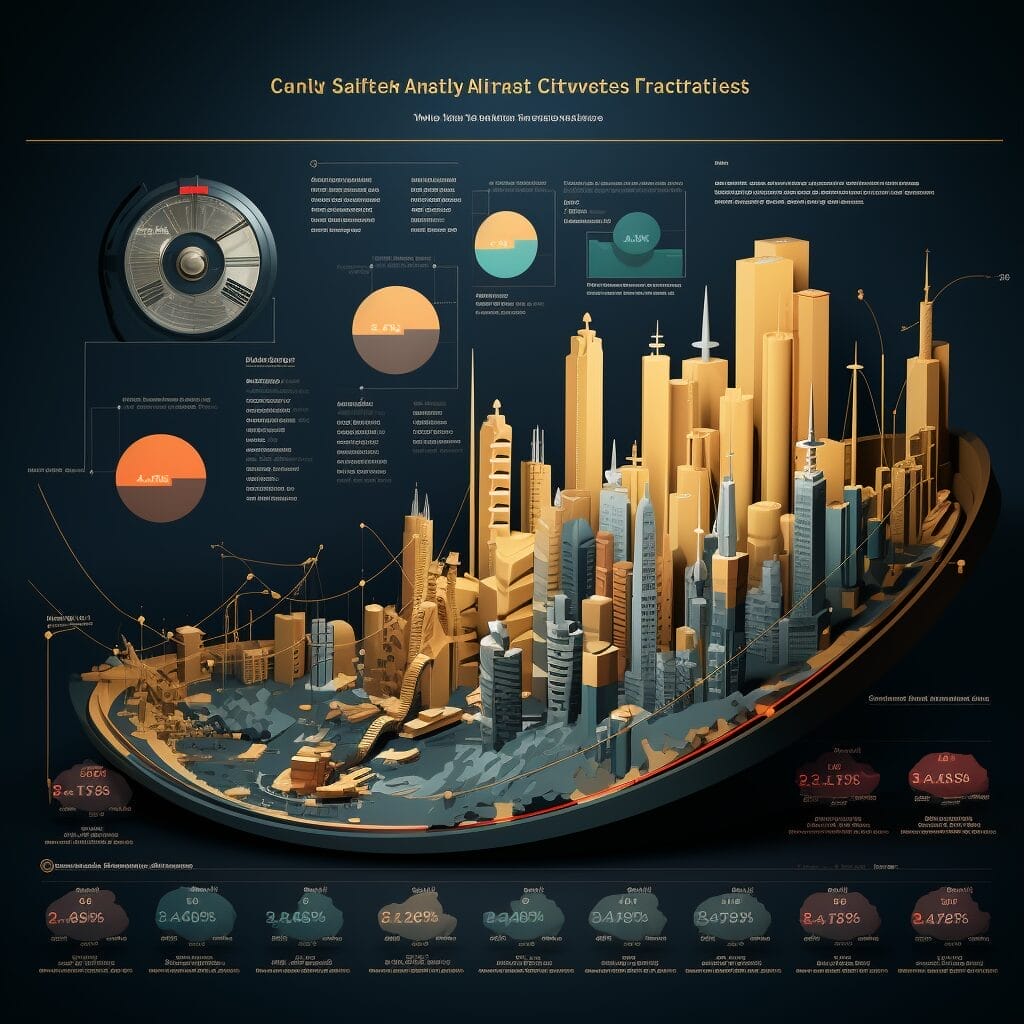“We still love a business that takes very little capital and, earns high returns, and continues to grow, and requires very little incremental capital.”
Determining and understanding the capital intensity of a business will help you find great investments.
A crucial aspect of business analysis involves examining the business model. The analysis entails understanding how the business generates revenue, identifying its growth drivers, and evaluating whether we can categorize the business model as asset-light or asset-heavy.
Many investors know Buffett “prefers” capital-light businesses but has also bought plenty of capital-intensive businesses.
In today’s post, we will learn:
- What is Capital Intensity?
- Capital Intensive vs Capital Light
- Capital Intensity Ratio (How to Calculate)
- Why Buffett Prefers Capital Light Companies
Okay, let’s dive in and learn more about capital intensity.
What is Capital Intensity?
Let’s define capital intensity before diving into the differences among companies.
The term “capital-intensive” pertains to business processes or industries that demand substantial investments for producing goods or services, resulting in a high proportion of fixed assets like property, plant, and equipment (PP&E).

Companies operating in capital-intensive industries often experience elevated levels of depreciation.
Great examples of the depreciation angle:
- Railroads
- Airlines
- Heavy machinery
- Restaurants
Understanding Capital Intensive:
Capital-intensive industries typically exhibit significant operating leverage, indicated by the fixed and variable costs ratio.
Consequently, these industries require a substantial production volume to generate a satisfactory return on investment. This condition implies that minor fluctuations in sales can result in substantial changes in profits and return on invested capital.
A perfect example of this scenario is an amusement park. They have high fixed costs related to their rides, and when revenues grow, they exhibit amazing operating leverage and profits. But when revenues decline, they hop on the struggle bus.
The heightened operating leverage in capital-intensive industries increases their susceptibility to economic slowdowns compared to labor-intensive businesses.
This vulnerability arises from the obligation to cover fixed costs, such as plant overhead and equipment depreciation, which persist even during industry recessions.
Examples of capital-intensive industries encompass:
- Automobile manufacturing
- Oil production and refining
- Steel production
- Telecommunications
- Transportation sectors (e.g., railways and airlines).
These sectors necessitate substantial capital expenditures.
Capital Intensive vs Capital Light
A business with an asset-light model enjoys various advantages over its capital-intensive counterpart:

1. Lower Capital Requirements:
Asset-light businesses necessitate considerably lower initial investments compared to capital-heavy ones. The lower investments reduce risk, as high fixed costs and extensive capital needs do not burden these businesses. The lower capital requirements also free up cash for strategic initiatives like business reinvestment, acquisitions, and stock repurchases.
2. Higher Profit Margins:
Thanks to an efficient cost structure, asset-light businesses exhibit superior profit margins. Typically, they focus on their core operations and outsource non-core segments, leveraging technology to streamline processes.
3. Flexibility to Seize Business Opportunities:
An agile business model is essential for adapting to a dynamic market landscape. Technological advancements demand agility and companies that fail to keep pace risk falling behind. Investors prefer companies capable of navigating changes effectively.
4. Doesn’t Need Debt to Grow and Operate:
Asset-light businesses often maintain lower debt and financial leverage levels by sidestepping extensive capital investments. This financial prudence enhances resilience to economic downturns and interest rate fluctuations, providing investors with a more stable and secure investment proposition.
5. Focus on Innovation, Product Development, and Customer Satisfaction:
With fewer resources tied up in physical assets, asset-light businesses can allocate more capital and attention to research and development (R&D), including developing new business segments and improving existing products and services.
6. Cash-Generating Machines:
Asset-light businesses typically generate robust cash flows due to streamlined operations and lower fixed costs. Strong cash flow supports daily operations, facilitates reinvestment in growth initiatives, allows for shareholder dividends, and enables the pursuit of strategic acquisitions when deemed appropriate.
7. Inflation Doesn’t Impact as Much:
As exemplified by See’s Candies and Google, capital-light companies are more resilient against inflation due to their reliance on intangible assets.
See’s Candies, known for its premium pricing, attributes its success to quality ingredients and its strong brand—an intangible asset impervious to inflationary pressures. In contrast to businesses with tangible assets, See’s Candies can increase prices during inflation, enhancing profit margins.
Similarly, Google’s intangible value, rooted in its brand, traffic, and database, makes it less susceptible to inflationary impacts than businesses dependent on tangible assets for sales generation.
Capital-intensive businesses have some advantages, too.
1. Reduced Expenses
Businesses with high capital intensity can manufacture goods at a lower per-unit cost, enabling them to offer products at a more competitive price point.
2. Increased Profits
Capital-intensive industries draw greater investor interest due to their potential for higher returns on investment.
3. Technological Scale Efficiencies
Capital-intensive businesses can minimize human error, enhance efficiency, and achieve more consistent output by applying technical economies of scale.
4. Job Creation
Industries with high capital intensity contribute to software design, artificial intelligence, and marketing job creation.
Some of these advantages may surprise you—for example, job creation in software or AI. You might think those jobs operate in capital-light industries, but this is not true if you think about AI, for example.
AI requires tremendous resources — data towers, lots of computing, and many employees to program the machines — all of which are quite capital-intensive. Those machines will need constant updating and replacing as the hardware becomes obsolete.
Examples of capital-intensive companies:
- Exxon ($XOM)
- NextEra Energy ($NEE)
- Boeing ($BA)
- Taiwan Semiconductor ($TSM)
- Amazon ($AMZN)
- Tesla ($TSLA)
- Netflix ($NFLX)
Examples of capital-light companies:
- See’s Candies
- Uber ($UBER)
- Airbnb ($ABNB)
- Google ($GOOG)
- Crowdstrike ($CRWD)
- MongoDB ($MDB)
- Salesforce ($CRM)
- Moody’s ($MCO)
- FICO ($FICO)
The point is that not every tech company is capital-light, and not every manufacturer is capital-intensive.
You need to understand the business model, what drives revenues and profits, and determine the capital intensity.
Capital Intensity Ratio (How to Calculate)
We can measure the capital intensity of companies in three different ways:
- Capital Intensity Ratio
- Capex / Sales
- Capex / Operating Cash Flow
Let’s break each down using Microsoft as our guinea pig.

Capital Intensity ratio
We can define the capital intensity ratio as the spending required per dollar of revenue generated.
The formula is simple:
Capital Intensity Ratio = Total Average Assets / Revenues
We can find total average assets on the balance sheet for the current year + past year, then divide by two. And the revenues come from the top line of the income statement.
So, for Microsoft, we find these numbers:
Total Assets 2023 = $411,976
Total Assets 2022 = $364,840
Revenues = $211,915
Plugging everything into the formula, we find:
Capital Intensity Ratio = (411,976 + 364,840) / 211,915 = 1.83
The formula tells us that Microsoft spends $1.83 to generate $1.00 of revenue from its assets.
The results tell us the lower, the better because the less capital you need to invest to run the business, the better.
Capex / Sales
Again, using Microsoft, we can find the necessary numbers on the cash flow and income statements.
- Capex = $28,107 million
- Revenues = $211,915 million
Now, plugging in the above numbers, we find:
Capex/Sales = 28,107/211,915 = 13.2%
Our target for capex/sales is 10%, and Microsoft is currently above that number. One good practice with all of these ratios is to look out over a longer horizon.
- 2022 = 13.3%
- 2021 = 12%
- 2020 = 12.3%
- 2019 = 10.8%
- 2018 = 11.1%
Capex / Operating Cash Flow
Using Microsoft again, we can find Capex and Operating Cash Flow from the company’s cash flow statement.
- Capex = $28,107 million
- Operating Cash Flow = $87,582 million
Capex/Operating Cash Flow = 28,107 / 87,582 = 32.1%
Our target with this ratio is less than 20%.
Let’s look at the longer horizon for Microsoft:
- 2022 = 26.8%
- 2021 = 26.9%
- 2020 = 25.4%
- 2019 = 26.7%
- 2018 = 26.5%
As we can see from the above analysis, Microsoft doesn’t present as a capital-light company and if we think about their business model, part of it makes sense. The company now generates much of its revenue from the cloud, which requires a tremendous investment in data centers, programming, software, and personnel.
These continuing investments will allow Microsoft to continue to grow. But, they do not lend themselves to a capital-light model until they can switch to a more subscription-based model and reduce the investment necessary for cloud growth.
Let’s look at some others for comparison.
Company | Capital Intensity Ratio | Capex/Sales | Capex/OCF |
1.27x | 11.1% | 34.4% | |
Meta | 1.51x | 27% | 62.3% |
Crowdstrike | 1.92x | 10.5% | 25% |
Airbnb | 1.77x | 0.3% | 0.7% |
Uber | 1.11x | 0.8% | 39.3% |
Fortinet | 1.38x | 6.3% | 16.2% |
Based on the above figures, Crowdstrike, Airbnb, Uber, and Fortinet offer capital-light business models.
A great way to use these ratios is to help you screen for capital-light style businesses.
Another important caveat to remember: most companies break capex or capital expenditures into “growth” capex and “maintenance” capex internally. They use the growth capex to grow the company, while they use the maintenance spending to maintain the business.
We could argue removing the growth capex from our calculations because we only want to measure the maintenance capex. But because most companies don’t reveal the differences, we can only speculate.
Why Buffett Prefers Capital Light Companies
Warren and the late Charlie Munger have long preferred capital-light businesses. As evidence, see their commentary from their See’s Candies purchase:

“Long-term competitive advantage in a stable industry is what we seek in a business. If that comes with rapid organic growth, great. But even without organic growth, such a business is rewarding. We will simply take the lush earnings of the business and use them to buy similar businesses elsewhere. There’s no rule that you have to invest money where you’ve earned it. Indeed, it’s often a mistake to do so: Truly great businesses, earning huge returns on tangible assets, can’t for any extended period reinvest a large portion of their earnings internally at high rates of return.
Let’s look at the prototype of a dream business, our own See’s Candy. The boxed-chocolates industry in which it operates is unexciting: Per-capita consumption in the U.S. is extremely low and doesn’t grow. Many once-important brands have disappeared, and only three companies have earned more than token profits over the last forty years. Indeed, I believe that See’s, though it obtains the bulk of its revenues from only a few states, accounts for nearly half of the entire industry’s earnings.
At See’s, annual sales were 16 million pounds of candy when Blue Chip Stamps purchased the company in 1972. (Charlie and I controlled Blue Chip at the time and later merged it into Berkshire.) Last year See’s sold 31 million pounds, a growth rate of only 2% annually. Yet its durable competitive advantage, built by the See’s family over a 50-year period, and strengthened subsequently by Chuck Huggins and Brad Kinstler, has produced extraordinary results for Berkshire.”
We can boil his comments down to three main reasons for liking capital-light-type businesses:
- Emphasis on Long-term Competitive Advantage: Buffett and Munger love moats or competitive advantages. They discuss the power of these types of advantages throughout their writings and talks. The text underscores the importance of seeking businesses like See’s with long-term competitive advantages, especially in stable industries. This strategy prioritizes sustained success over rapid organic growth.
- Strategic Use of Earnings: Buffett also waxes eloquent about the impact of stable, consistent earnings over a long period. The text highlights a strategic approach to utilizing earnings. Without organic growth opportunities, the suggestion is to channel earnings from a successful business to acquire similar businesses elsewhere, emphasizing flexibility in capital allocation.
- Case Study: See’s Candy as a Dream Business: Buffett offers See’s Candy as a prototype of an ideal business throughout the above quote. Despite the unexciting industry in which it operates, he showcases its durability and competitive advantage. The example illustrates how investors can achieve exceptional returns without relying on high organic growth rates, provided the business has a robust, enduring competitive edge.
To further hammer home the point of why he likes capital-light businesses, from an interview on CNBC in 2017:
“I did mention one thing at the meeting, which I don’t think people appreciated at all… So you have close to 10% of the market value, perhaps of the United States, in five extremely good businesses that essentially take no capital. Now, that was not the case in the past.”
The five businesses he was referring to were:
- Apple
- Microsoft
- Meta
- Amazon
They all offer strong moat characteristics, capital-light tendencies, and the ability to reinvest at high rates > 30% ROIC.
Investor Takeaway
Understanding capital intensity in business is like peeling back the layers of an onion. It’s about delving into companies’ drivers, discerning whether they operate with a capital-light or heavy model.
We explored different ratios like the Capital Intensity Ratio, Capex/Sales, and Capex/Operating Cash Flow, unraveling the financial narrative of giants like Microsoft, Google, Meta, Airbnb, and others.
We shined a spotlight on the allure of capital-light businesses, echoing Warren Buffett’s affection for enterprises with enduring competitive advantages.
Imagine these businesses as characters in a novel, each with its unique plot. See’s Candy emerges as a protagonist, a dream business thriving not on rapid growth but on the strength of its competitive edge over decades.
We can view each company on its own and analyze the business model using the ratios and understanding the inputs for the business model once we understand the revenue drivers and its impact on capital intensity.
The investor takeaway becomes a personalized guide, urging us to view companies as individuals with distinct stories. It encourages peering into their business models, understanding their revenue drivers, and recognizing the impact of capital intensity. It’s a reminder that behind every stock symbol lies a tale of strategy, resilience, and potential. After all, not every tech company dances lightly on capital, and not every traditional business carries the weight of heavy investments. It’s the art of reading between the financial lines and finding the stories that resonate with our investment journey.
Related posts:
- From Investments to Cash: Decoding the Cash Conversion Ratio Cash conversion is a key concept in investing. It helps investors determine how effective they are at translating earnings into cash. It also helps us...
- Beginner’s Guide to Total Current Assets You can use total current assets to assess a company’s financial standing. Today’s post will teach us the formulas to use and what to do...
- A Deep Dive into the Inner Workings of Compounding Machines: Understanding Their Competitive Advantage A Deep Dive into the Inner Workings of Compounding Machines: Understanding Their Competitive Advantage As an investor, you always seek ways to maximize your returns...
- Understanding the 12 Most Common Types of Business Models Updated 4/4/2024 In a speech in Switzerland, Warren Buffett discussed what he means by buying businesses he understands. “We don’t look for specific sectors; we...
